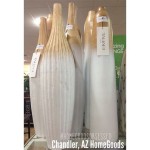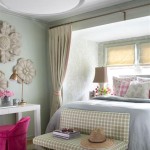Iridescent Room Decor: A Comprehensive Guide
Iridescent room decor has gained significant popularity in recent years, offering a unique and captivating aesthetic to interior spaces. This trend utilizes materials and finishes that display a spectrum of colors depending on the angle of light, creating a visually dynamic and engaging environment. This article aims to provide a comprehensive overview of iridescent room decor, exploring its principles, applications, and considerations for implementation.
Understanding Iridescence
Iridescence, also known as goniochromism, is the phenomenon where the color of a surface appears to change as the angle of view or the angle of illumination changes. This effect is typically caused by the structural coloration of the material, where microscopic structures on the surface interfere with light waves. This interference results in the amplification of certain wavelengths of light and the suppression of others, leading to the perception of shifting colors. Unlike pigments that produce color by absorbing certain wavelengths, iridescent materials create color through this structural interference.
There are several types of structural coloration that can produce iridescence. Thin-film interference is one common mechanism, observed in soap bubbles and oil slicks. This occurs when light reflects from the top and bottom surfaces of a thin transparent layer, and the resulting interference depends on the thickness of the layer and the angle of incidence. Diffraction gratings, such as those found on CDs and DVDs, create iridescence by diffracting light into different wavelengths, resulting in a rainbow-like effect. Photonic crystals, with their periodic structures, can also exhibit iridescence by selectively reflecting specific wavelengths of light depending on the angle.
The perception of iridescence is highly dependent on the illumination source and the viewing angle. Changes in either of these factors will affect the perceived colors. This dynamic property makes iridescent materials particularly interesting for interior design, as they can create a constantly changing visual experience.
Applications of Iridescent Materials in Interior Design
Iridescent materials can be incorporated into various aspects of room decor, adding a touch of brilliance and sophistication. From wall finishes and furniture to accessories and lighting, the possibilities are vast and varied.
Wall Finishes
Iridescent paints and wallpapers can transform ordinary walls into captivating features. These finishes often contain microscopic particles or films that create the iridescent effect. When light hits the wall, the colors shift and shimmer, adding depth and dimension to the room. Iridescent wall finishes can be used to create accent walls, highlight architectural details, or even envelop the entire room in a luminous glow.
Application techniques for iridescent paints and wallpapers are crucial for achieving the desired effect. Proper surface preparation is essential to ensure a smooth and even finish. The type of primer used can also affect the final appearance of the iridescent layer. It's often recommended to apply multiple thin coats of iridescent paint rather than one thick coat to achieve a more uniform and vibrant effect. Furthermore, the direction of application can influence the perceived texture and color variations.
Iridescent tiles can be another excellent choice for wall coverings, especially in bathrooms and kitchens. These tiles are typically made of glass or ceramic and feature an iridescent coating. They can add a luxurious and modern touch to any space, reflecting light and creating a dazzling display of colors.
Furniture and Accessories
Iridescent furniture pieces can serve as focal points in a room. Tables, chairs, and even storage units can be treated with iridescent finishes or made from materials that exhibit iridescence. For example, a coffee table with a glass top featuring an iridescent film can become a stunning centerpiece, reflecting light and colors onto the surrounding surfaces. Similarly, chairs upholstered in iridescent fabric can add a touch of glamour and sophistication.
Smaller accessories, such as vases, bowls, and decorative objects, can also incorporate iridescence to enhance the overall aesthetic of the room. These items can be strategically placed to catch the light and create subtle pops of color. Iridescent glass ornaments, for instance, can add a touch of whimsy and charm. Textile accessories like cushions and throws with iridescent threads or patterns can also be integrated to add a subtle yet noticeable shimmer.
When incorporating iridescent furniture and accessories, it's important to consider the overall color scheme of the room. Iridescent pieces can be used to complement or contrast with the existing colors, depending on the desired effect. A neutral color palette can serve as a backdrop for iridescent accents, allowing them to stand out and create a dramatic impact.
Lighting
Iridescent lighting fixtures can cast enchanting patterns and colors onto the walls and ceiling. Lampshades, pendants, and chandeliers made from iridescent glass or other materials can disperse light in a unique and captivating way. These fixtures can create a soft and ambient glow, adding warmth and atmosphere to the room.
The type of light source used in conjunction with iridescent fixtures can significantly affect the perceived color. Warm white bulbs tend to enhance the warmer tones in the iridescent material, while cool white bulbs can bring out the cooler tones. Experimenting with different light sources can help achieve the desired color effect.
Furthermore, the placement of iridescent lighting fixtures can play a crucial role in creating the desired ambiance. Strategically positioning these fixtures to highlight specific areas of the room or to create interesting shadows can enhance the visual impact of the iridescent decor.
Considerations for Implementing Iridescent Room Decor
While iridescent decor can add a unique and captivating touch to any room, it's important to consider certain factors to ensure a harmonious and balanced design.
Balancing Iridescence with Other Elements
Overusing iridescent materials can overwhelm the space and create a sense of visual chaos. It's crucial to balance iridescence with other design elements, such as neutral colors, natural textures, and simple forms. Incorporating iridescent accents sparingly can create a focal point without overpowering the room.
Pairing iridescent materials with matte finishes can create an interesting contrast. The reflective nature of iridescence will stand out against the subdued texture of matte surfaces. This contrast can add depth and dimension to the room, creating a visually engaging environment. For example, an iridescent vase can be placed on a matte wooden table to create a striking contrast.
The use of natural light can also enhance the beauty of iridescent materials. Natural light will bring out the subtle color variations and create a dynamic display of light and shadow. Positioning iridescent decor near windows or skylights can maximize this effect.
Choosing the Right Color Palette
The color palette of the room should complement the iridescent elements. Neutral colors, such as white, gray, and beige, provide a versatile backdrop that allows the iridescent colors to shine. These neutral tones can also help to balance the visual complexity of iridescent materials.
When choosing accent colors, it's important to consider the dominant colors in the iridescent materials. Complementary colors can create a harmonious and balanced design. For example, if the iridescent material has a predominantly blue hue, using orange accents can create a visually appealing contrast. Analogous colors, which are colors that are adjacent to each other on the color wheel, can also be used to create a cohesive and harmonious color scheme.
Avoid using too many bold or clashing colors, as this can detract from the beauty of the iridescent decor. A well-chosen color palette will enhance the overall aesthetic of the room and create a sense of harmony and balance.
Maintenance and Durability
Iridescent materials can be delicate and require proper care to maintain their beauty. Dusting regularly with a soft cloth is essential to prevent the buildup of dirt and grime. Avoid using harsh chemicals or abrasive cleaners, as these can damage the iridescent coating.
The durability of iridescent materials can vary depending on the type of material and the quality of the finish. Some iridescent coatings may be susceptible to scratching or fading over time. Choosing high-quality materials and finishes is crucial for ensuring the longevity of the iridescent decor.
Protecting iridescent surfaces from direct sunlight can help prevent fading. Using window coverings, such as blinds or curtains, can filter the sunlight and reduce the risk of damage. Additionally, avoiding placing heavy objects on iridescent surfaces can prevent scratches and other damage.

10 Sparkling And Gorgeous Iridescent Home Decor To Make Your Fit For A Unicorn Homedecomalaysia Com Bedroom Canopy Crib

Pastel Iridescent Furniture Decoration Ideas Dream House Decor Room

Design Décor Cool House Designs Iridescent Decor Home Trends

Las Vegas Wardrobe Stylist Designer Of Fun Earrings Happy Gifts

10 Sparkling And Gorgeous Iridescent Home Decor To Make Your Fit For A Unicorn Homedecomalaysia Disco Birthday Party Glitter Wedding Photos

2025 Trend Report Iridescent Decor Is In

Rainbow Iridescent Headboard Decor Apartment Room

Rainbow Iridescent Headboard Bedroom Interior Design Minimalist

Design Décor Iridescent Decor

10 Sparkling And Gorgeous Iridescent Home Decor To Make Your Fit For A Unicorn







